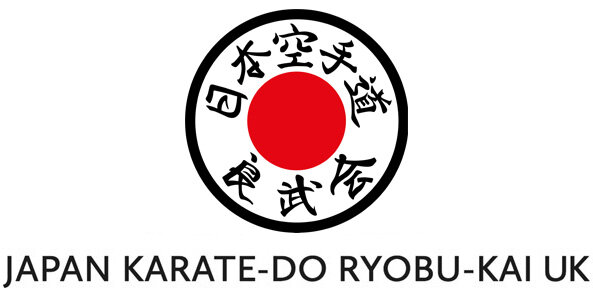Chōki Motobu Sensei (1870–1944)
Konishi Soke considered Chōki Motobu Sensei to be a martial arts genius and made every effort to train with him. Motobu Sensei's specialty was the Naifanchin kata. As a teacher, he knew many kata, but would only teach them when his student had mastered Naifanchin. Through training in this kata, he became famous for scooping his opponent's leg. Although physically a big man, Motobu Sensei was very light on his feet, which may be the reason why he was so successful in challenging other martial artists to kumite. His teaching to Konishi Soke emphasized footwork and the use of Ki. Motobu Sensei didn't speak Japanese very well and relied on friends to translate for him when he taught. He was not wealthy and had difficulty supporting himself during his visits to Japan. Konishi Soke organized the Chōki Motobu Support Society and arranged for seminars and training sessions at which Motobu Sensei was able to collect fees. Konishi Soke accompanied Motobu Sensei to many training sessions in order to assist him in explaining the concepts and techniques of karate.
Chōki Motobu Sensei was from Akahira Village in Shuri, Okinawa and capital of the Ryūkyū Kingdom when he was born. His older brother Motobu Chōyū was also a talented koryu-te practitioner.
His father was Lord Motobu Chōshin (Motobu Aji Chōsin) a descendant of the sixth son of the Okinawan King, Shō Shitsu (1629–1668) called Shō Kōshin (Prince Motobu Chōhei 1655–1687). Motobu Sensei was the third son of Motobu Udun ("Motobu Palace"), one of the lower branches of the Ryūkyūan royal family.
As the last of three sons, Motobu Chōki Sensei was not privileged to an education in his family's style of Te. Despite this Motobu Sensei was very interested in learning, spending much of his youth training on his own practising Hojo Undo (Supplementary training), hitting the makiwara, pushing and lifting heavy stones to increase his strength. He is reported to have been very agile, which gained him the nickname Motobu no Saru, or "Motobu the Monkey." He began as student under Matsumura Sōkon and continued under Ankō Itosu, Sakuma Pechin and Kōsaku Matsumora.
Certain amongst the martial arts fraternity of the time tried to dismiss him as a violent and crude street fighter, with no formal training. Mainly due to the fact they couldn’t better him.
Yet Motobu Sensei was a student of several of Okinawa's most prominent koryu-te practitioners, they all taught Motobu Sensei at one time or another. Many teachers found his habit of testing his fighting prowess via street fights in the tsūji (red light district) undesirable, but his noble birth as a descendant of the royal Okinawan Shō family may have made it hard for them to refuse. He was a great advocate of pressure testing and his own kata, Shiro Kuma (White Bear) is based on a very direct approach.
The malicious rumour of Motobu Sensei being an illiterate has been largely discredited by the existence of samples of his handwriting, which is clearly that of an educated man.
Motobu Sensei’s language difficulties may have been motivated more by protest at being a displaced member (by the Japanese annexation of Okinawa) of the Ryukyuan aristocracy than by inability.
It is important to distinguish between the Motobu-ryū which, and Motobu Udun Di, the unique style of the Motobu family, which bears a resemblance to Aikijutsu.
Motobu Sensei’s training focused on a series of two-man kumite drills, which were an advancement on the instructional methods of the time. He heavily favoured a curriculum based on the Naifanchin kata because of its tactical connectivity from bunkai/oyo/henka and real fighting.
The famous boxing match…
Motobu Sensei moved to Osaka, Japan, in 1921,following a number of failed business ventures. He was cajoled to enter a "boxing vs judo" match which was taking place. These matches were popular at the time, and often pitted a visiting foreign boxer against a jujutsu or judo man.
An account of the fight from a 1925 King magazine claims Motobu Sensei is said to have entered into a challenge match with a Russian boxer or strongman. Early rounds involved evasion by the smaller man, but after a few rounds, Motobu Sensei moved in on the taller, larger boxer and knocked him out with a single hand strike to the head. Motobu Sensei was then fifty-two years old.
The article detailed Motobu Sensei’s surprising victory, although the illustrations clearly show Gichin Funakoshi Sensei as the fighter in question. This publication mistake increased the bitter rivalry between the two men and led to an apparent confrontation. The two were often at odds in their opinions about how Okinawan martial arts should be taught and used.
The popularity generated by this unexpected victory propelled both Motobu Sensei and karate in to the “limelight”, that neither had previously known in Japan. Motobu Sensei opened a dojo, the Daidokan, where he taught until World War II started in 1941.
Motobu Sensei lived and taught karate in Japan until 1942, when he returned to Okinawa, dying shortly thereafter. Prior to this, he had made several trips there to study orthodox kata and kobujutsu in an effort to preserve the traditional forms of the art supported by Konishi Soke.

